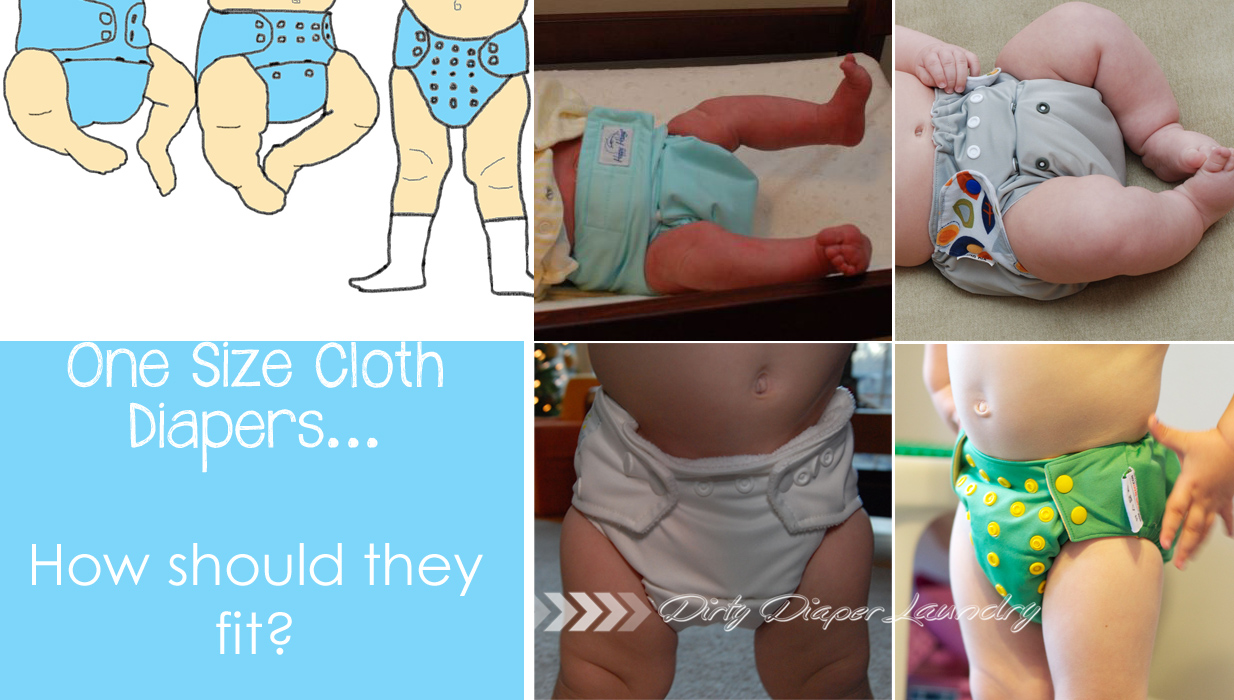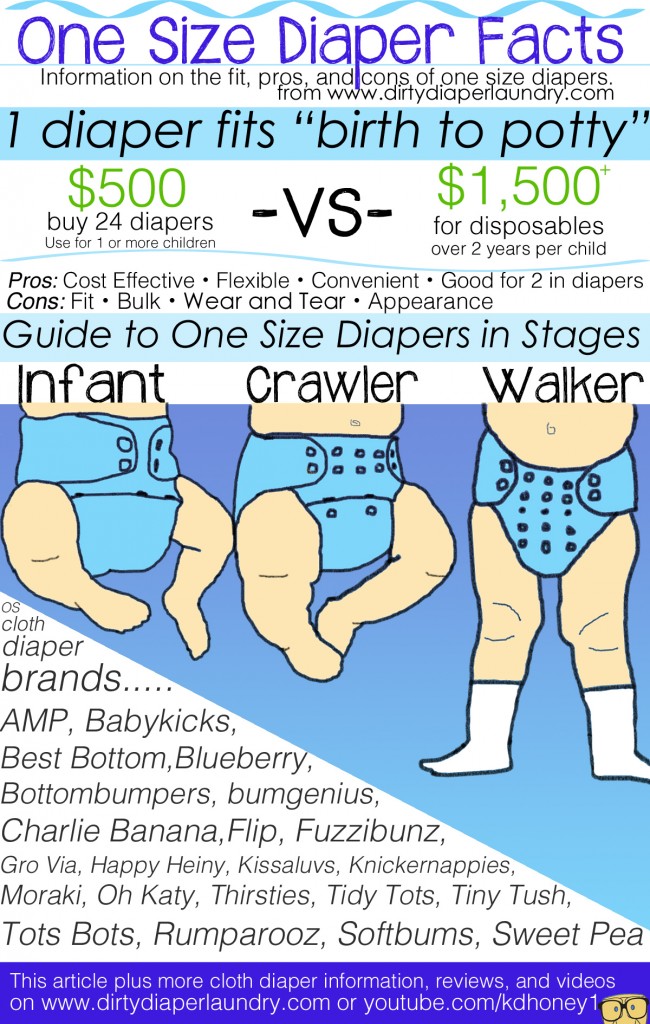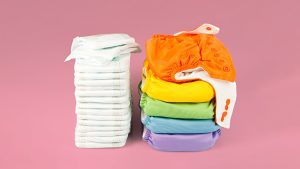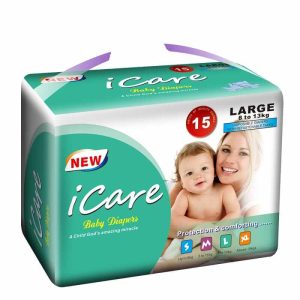**Pros and Cons of All-In-One Cloth Diapers:** Pros: All-in-one cloth diapers are convenient and easy to use. They are eco-friendly and cost-effective over time.
Cons: They can be expensive upfront and take longer to dry. They may also require more frequent changes. **** All-in-one cloth diapers have gained popularity among eco-conscious parents. These diapers combine absorbent layers and waterproof covers into a single piece, simplifying diaper changes.
They eliminate the need for separate inserts and covers, making them user-friendly. Many parents appreciate their environmental benefits, as they reduce waste compared to disposables. Despite a higher initial cost, they save money in the long run. They do, however, have drawbacks, including longer drying times and the need for more frequent changes. Understanding these pros and cons helps parents make informed decisions about their diapering choices.
Introduction To All-in-one Cloth Diapers
All-in-one cloth diapers are a popular choice among parents today. They are designed to be easy to use and eco-friendly. These diapers simplify the cloth diapering process by combining multiple layers into a single unit. This makes them convenient and efficient for busy parents.
What Are All-in-one Cloth Diapers?
All-in-one cloth diapers, often called AIOs, are a complete diapering system in one piece. They consist of an absorbent inner layer sewn to a waterproof outer shell. This means you don’t need separate covers or inserts. The diaper is ready to use right away, just like a disposable diaper.
Parents love AIOs because they are easy to use and require minimal preparation. There’s no need to stuff inserts or fold prefolds. Simply put the diaper on your baby and go. After use, you toss it into the laundry. This simplicity makes AIOs a favorite for caregivers and daycare providers.
Brief History
The concept of cloth diapers dates back centuries. Early versions were simple cloths secured with pins. Over time, diapers evolved to include waterproof covers and modern fasteners.
All-in-one cloth diapers emerged in the latter part of the 20th century. They were designed to simplify the cloth diapering experience. As environmental concerns grew, parents sought more sustainable diapering options. AIOs gained popularity for their convenience and eco-friendly design.
Today, all-in-one cloth diapers come in various styles and materials. They offer customizable fit options and advanced absorbent fabrics. Modern AIOs are a testament to the evolution of cloth diapering technology.
| Pros | Cons |
|---|---|
|
|
Advantages Of All-in-one Cloth Diapers
All-In-One (AIO) cloth diapers are a popular choice for modern parents. They combine the absorbency of a cloth diaper with the convenience of disposables. Below are the primary advantages of using AIO cloth diapers.
Convenience
AIO cloth diapers are incredibly convenient. They come as a single piece, which means no extra inserts or covers are needed. Parents save time since there is no need to assemble the diaper. This makes changing diapers a quick process.
Additionally, AIO cloth diapers are easy to use. Even babysitters and daycare centers find them simple to handle. This ease of use is one of the top reasons parents choose AIO cloth diapers.
Cost Savings
Though the initial cost of AIO cloth diapers might be higher, they offer significant savings over time. Disposable diapers can cost a lot over the years. Investing in AIO cloth diapers can save parents hundreds of dollars.
AIO diapers are also durable. They can be used for multiple children, adding to the overall savings. Below is a quick comparison of costs between AIO cloth diapers and disposables:
| Type | Average Cost Per Year |
|---|---|
| Disposables | $800 – $1,200 |
| AIO Cloth Diapers | $300 – $500 (initial cost) |
Environmental Benefits
Using AIO cloth diapers helps reduce waste. Disposable diapers take hundreds of years to decompose. Switching to cloth diapers reduces the number of diapers in landfills.
AIO cloth diapers are also made from natural materials. This means fewer chemicals and toxins are released into the environment. Parents who choose AIO cloth diapers contribute to a healthier planet.
Below is a list of environmental benefits:
- Reduces landfill waste
- Uses natural materials
- Lowers carbon footprint
In summary, AIO cloth diapers offer convenience, cost savings, and environmental benefits. They are a smart choice for parents and the planet.
Disadvantages Of All-in-one Cloth Diapers
All-in-one cloth diapers have many benefits. Yet, they come with some drawbacks. Let’s explore these disadvantages to help you make an informed decision.
Initial Investment
All-in-one cloth diapers require a significant upfront cost. A single diaper can cost between $20 and $30. You may need 20-30 diapers to cover your baby’s needs. The initial investment can be a burden for some families.
| Item | Cost |
|---|---|
| Single Diaper | $20 – $30 |
| 20-30 Diapers | $400 – $900 |
Laundry Requirements
Cloth diapers need regular washing. This adds to your daily chores. Washing them properly to avoid stains and odors is important. It can become time-consuming. Also, you might need to use special detergents, which can be costly.
- Requires regular washing
- Time-consuming
- May need special detergents
Bulkiness
All-in-one cloth diapers are often bulkier than disposables. This can affect your baby’s comfort. Finding clothes that fit properly over these diapers can be challenging. The bulkiness can also be inconvenient when traveling.
- Bulkier than disposables
- Affects baby’s comfort
- Challenges in finding fitting clothes

Credit: dirtydiaperlaundry.com
Cost Comparison
When considering the switch to all-in-one cloth diapers, understanding the cost comparison is crucial. This section dives into the financial aspects, comparing cloth and disposable options and highlighting long-term savings.
Cloth Vs Disposable
Cloth diapers have an upfront cost. You buy them once and reuse them. Disposable diapers, on the other hand, are bought repeatedly. This means continuous spending over time.
Here’s a simple cost breakdown:
| Type | Initial Cost | Monthly Cost | Annual Cost |
|---|---|---|---|
| Cloth Diapers | $300 – $500 | $20 (washing) | $240 |
| Disposable Diapers | $0 | $80 – $100 | $960 – $1200 |
As seen, the annual cost of disposables can be four times higher. This makes cloth diapers a more budget-friendly choice.
Long-term Savings
Cloth diapers offer significant long-term savings. Once you buy them, your major expense is done. Washing costs are minimal compared to buying disposables every month.
Consider these points:
- Reusable for multiple children, saving even more.
- Resale value: Sell used cloth diapers to recover some costs.
- Potential health savings by avoiding diaper rash treatments.
By choosing cloth, families can save thousands over the diapering years. This makes cloth diapers a financially smart choice.
Environmental Impact
All-in-one cloth diapers are gaining popularity among eco-conscious parents. Their environmental impact is a significant factor to consider. These diapers have various pros and cons related to their effect on our planet.
Waste Reduction
All-in-one cloth diapers reduce waste significantly. A baby uses thousands of disposable diapers by age two. Disposable diapers take hundreds of years to decompose. Cloth diapers, on the other hand, are reusable. This reduces the amount of waste sent to landfills. Parents wash and reuse cloth diapers multiple times. This leads to a substantial decrease in daily waste.
Resource Consumption
Resource consumption is another critical aspect. Manufacturing cloth diapers requires resources like cotton and water. The production process can be resource-intensive. Yet, the long-term usage of cloth diapers balances this out. One cloth diaper can replace hundreds of disposables. This results in a net reduction in resource use over time.
Washing cloth diapers also consumes water and energy. It involves frequent laundering, which impacts water and electricity usage. Parents must consider the environmental cost of washing. Using energy-efficient washing machines and drying methods can help mitigate this.
Here is a comparison table:
| Aspect | Cloth Diapers | Disposable Diapers |
|---|---|---|
| Waste Generation | Low | High |
| Resource Consumption (Production) | High | Moderate |
| Resource Consumption (Usage) | Moderate | High |
In conclusion, both waste reduction and resource consumption are vital factors. Parents should weigh these aspects when choosing diapering options. Understanding the environmental impact can help make an informed decision.

Credit: m.youtube.com
User Experiences
Understanding the pros and cons of all-in-one cloth diapers can help parents make informed decisions. Let’s explore real-life experiences from parents and insights from experts.
Parent Testimonials
Many parents share their experiences with all-in-one cloth diapers. Here are some common themes:
- Convenience: Parents love the ease of use. No need for inserts or covers.
- Cost Savings: Many mention long-term savings. Fewer disposables mean less money spent.
- Environmental Impact: Parents feel good about reducing waste. Fewer diapers in landfills make a big difference.
Some parents also note a few challenges:
- Initial Investment: The upfront cost can be high. Some families find it hard to budget for.
- Drying Time: All-in-one diapers take longer to dry. This can be inconvenient for busy parents.
- Fit Issues: Not all brands fit every baby well. Some parents have trouble finding the perfect fit.
Expert Opinions
Experts in baby care and sustainability also weigh in on all-in-one cloth diapers. Here are their thoughts:
| Expert | Opinion |
|---|---|
| Pediatricians | Many support cloth diapers. They note fewer rashes and irritations. |
| Environmental Scientists | They highlight the reduced carbon footprint. Cloth diapers are better for the planet. |
| Budget Advisors | They emphasize long-term savings. Reusable diapers are cost-effective. |
Some experts also point out potential downsides:
- Maintenance: Cloth diapers require regular washing. This can be a hassle for some families.
- Water Usage: Washing diapers uses a lot of water. This can impact areas with water shortages.
- Learning Curve: New parents may need time to adjust. Proper use and care can take practice.
Care And Maintenance
Caring for all-in-one cloth diapers ensures they last long. Proper maintenance keeps them absorbent and soft. Let’s dive into essential tips for washing and storing these diapers.
Washing Tips
Washing cloth diapers might seem tricky, but it’s simple with these steps:
- Rinse soiled diapers in cold water first.
- Use a mild detergent free of fragrances and dyes.
- Wash in warm or hot water for a thorough clean.
- Rinse again to remove all detergent residues.
- Air dry or use a low-heat setting in the dryer.
Avoid fabric softeners and bleach. They can damage the fibers and reduce absorbency.
Storage Solutions
Proper storage is key to maintaining the quality of cloth diapers.
- Use a dry pail or a wet bag to store dirty diapers.
- Ensure the storage container has a lid to contain odors.
- Store clean diapers in a dry, well-ventilated area.
Keep diapers away from direct sunlight. Sunlight can cause fading and damage the materials.

Credit: untrainedhousewife.com
Choosing The Right Brand
Picking the right brand for all-in-one cloth diapers can be tricky. There are so many options. Each brand offers unique features and benefits. Finding the right fit for your baby is key.
Popular Brands
- BumGenius: Known for their high-quality materials and snug fit.
- Thirsties: Offers great absorbency and cute designs.
- GroVia: Famous for their eco-friendly materials and ease of use.
- Smart Bottoms: Popular for their organic fabrics and durability.
- Rumparooz: Loved for their double gusset feature to prevent leaks.
What To Look For
Consider the absorbency of the diapers. Babies need different levels of absorbency at different ages. Look for diapers with adjustable absorbency.
Fit and comfort are crucial. The diaper should fit snugly but not too tight. It should be comfortable for your baby to move around in.
Check the ease of cleaning. Some diapers are easier to clean and dry quickly. This can save you a lot of time.
Evaluate the cost. Some brands might be more expensive, but they can offer better quality and durability.
Look at the materials used. Organic and natural fabrics can be gentler on your baby’s skin.
Consider the designs and colors. Some parents love choosing fun and vibrant patterns for their baby.
| Brand | Key Feature | Price Range |
|---|---|---|
| BumGenius | Snug fit | $$$ |
| Thirsties | Great absorbency | $$ |
| GroVia | Eco-friendly | $$$ |
| Smart Bottoms | Organic fabrics | $$ |
| Rumparooz | Double gusset | $$ |
Frequently Asked Questions
What Are All-in-one Cloth Diapers?
All-in-one cloth diapers combine an absorbent layer and a waterproof outer shell in one piece. They’re convenient and easy to use. No additional covers or inserts are needed.
Are All-in-one Cloth Diapers Cost-effective?
Yes, all-in-one cloth diapers are cost-effective over time. They reduce the need for disposable diapers. The initial investment might be higher, but they save money in the long run.
How Do I Clean All-in-one Cloth Diapers?
Cleaning all-in-one cloth diapers is simple. Pre-rinse, wash with detergent, and rinse again. Air-dry or tumble-dry on low. Follow the manufacturer’s instructions for best results.
Do All-in-one Cloth Diapers Prevent Leaks?
All-in-one cloth diapers can effectively prevent leaks if used correctly. Ensure a proper fit and change them regularly. High-quality brands often offer better leak protection.
Conclusion
All-in-one cloth diapers have their advantages and drawbacks. They offer convenience and eco-friendliness but can be costly. Parents should weigh these factors based on their needs and lifestyle. Ultimately, choosing the right diaper depends on individual preferences and priorities. Make an informed choice for your baby’s comfort and your peace of mind.




